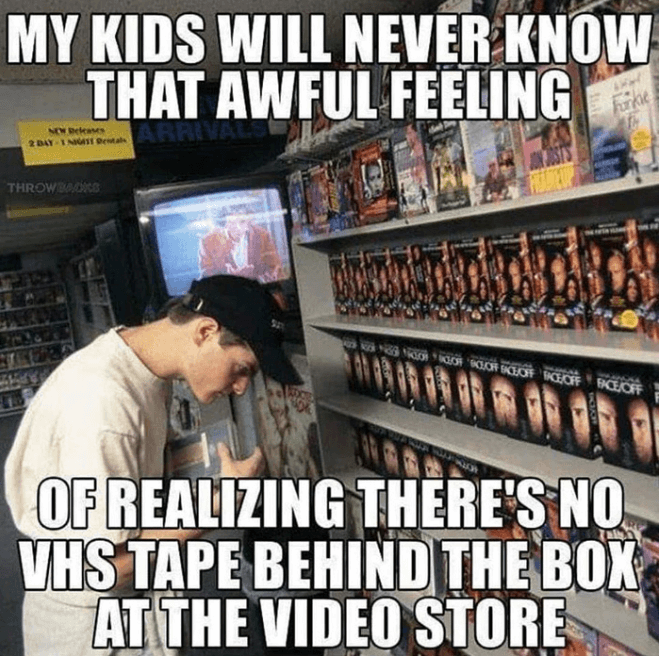2021 digital marketing trends: social media, SEO, content, niches

Let us be Nostradamuses and forecast what is going to work in e-commerce next year. No fraud, no sleight of hand; only pure recommendations supported by objective statistics and expert opinions.
We must be honest: 2020 threw everybody off their stride, including marketers. People felt sick, the market felt sick. Most forecasts didn’t turn true…but some did work out; for instance, our last year’s Instagram predictions proved true.
But we are going to be more careful with assumptions and deploy a solacing spoiler: analysts argue that though 2020 was full of pain and grudge, the digital marketing industry is going to feel better next year. So carry on, online entrepreneurs!
Social media and content
TalkWalker asked 70 international marketing specialists what they thought the future of social media would look like in the upcoming year. Below are the insights we gained from the report.
Firstly, user-generated content remains trending—just like it was in 2020. But nowadays, brands don’t just take and only publish what customers, readers, and watchers create; they mix it with their own materials. For one, online rental service AirBnb followed this philosophy. Marketers gathered hosts’ videos on how they were living through the pandemic, and published a branded promo video.
Secondly, users appreciate it—even more than they used to—when brands, influencers, and companies care about them. Statistics show that 78% of people want the products and services they are offered to meet the four C’s: Community, Contactless, Cleanliness, and Compassion.
Memes keep growing more and more popular. Well, it stacks up well: the virus can affect anything except our sense of humor—one of the vital power reserves that allows us to get through tough times. According to the numbers, 55% of people aged from 18 to 35 share memes with their friends at least once a week.
Speaking of nostalgia, throwback content is another trend that is going to hit the charts in 2021. Remind people of the good moments that will return, and enjoy a warm reception.
Social awareness keeps gaining traction! To draw attention to a product or service, tap into the sensitive topics: gender and race inequalities, environment, mental health, and justice. Don’t think we urge you to stoke tension; just remember that people are serious about such things, ready to discuss them and buy from those centering their activities around the supreme goal and mission.
Those well-established trends—including social media stories, storytelling, personal branding, relevant (and low-key) hashtags, and video content—will stand good. A few more words about the latter. TikTok has finally proved that users feel especially good about short clips. Instagram even launched the Reels service that allows shooting and publishing 15-second videos.

SEO
Artificial intelligence continues its march. Search engine algorithms get smarter: you can’t take them in with obsolete and unfair SEO tricks like purchasing links massively on various websites or publishing non-unique, unstructured, keyword-stuffed content. Google’s search algorithm now banks on the EAT principle: Expertise, Authoritativeness, Trustworthiness. Make sure your website and content match these criteria.
The year 2021 is expected to bring more voice search queries. Siri- and Alexa-powered devices live in almost every home, and we have to know how to optimize voice search. Remember that people go with longer phrases when voice-searching than when typing; and those are pretty similar to everyday speech: e.g. instead of “SEO trends”, people would say “What will SEO trends be in 2021?”). There are already some texts devoted to making the website voice search-optimized.
Back in 2019, Google launched indexing for mobile device search queries. And this has a sound reason behind it: experts assume that 72% of users will go online on their mobile devices. What does it mean to you? If you still have no mobile-optimized website version (check whether you have one here), you are at risk of losing a great deal of profit. You’d better consider this in 2021.
Besides, starting spring 2020, Google accounts UX indicators of the website: page loading speed, interface and navigation intuitiveness, content structure and readability. You can find myriads of texts full with website usability tips—like this one. Apply the most relevant ones practically.

Google now displays more and more videos for virtually any query; it also shows them in the zero search section. So focus on optimizing your videos: add relevant titles and descriptions, set up befitting previews, and monitor engagement. Learn more about it here.
One more thing. Globalization is real, but an individual’s personal life gets more and more confined—and the pandemic has highly contributed to this. People prefer going out to local places and don’t head downtown—to avoid public transit. Therefore, local SEO grows more important; you have to pay heed to optimizing user queries in a certain region. Employ Google My Business: sign up and update your info regularly; create local pages on your website.
What else?
- Today, 55% of Americans listen to podcasts at least from time to time. Again: more and more people get themselves voice assistants. Isn’t it handy to ask Alexa to play a favorite podcast while doing home chores? All this brings us to the notion that including ads in podcasts can be a great idea. Read more about the format here.
- People spend more time at home: this affords more concentration on the content. People want to not just read about the product but also, say, play a brand’s game. Interactivity works; it can be contests, special projects, games on social media or even in banners, and polls. Any gamification technique may be appropriate.
- The gaming streaming industry experiences growth as well. Users indulge in watching their favorite live gaming sessions. And while there come services allowing embedding ads into streams, we recommend that you consider this opportunity.
- Contextual advertising gets more automation-concerned. Artificial intelligence can now forecast conversions, offer an optimal cost and method of promotion. You may want to find services that help automate contextual advertising setup, reporting, error detection, and target action-based bidding. All this will save you time; and time management is a skill that never loses its value.
- Here are some shocking statistics: 80% of people are more likely to buy when they see a personalized ad. And we don’t just mean a name in the ad (though it may work as well) but targeting settings based on the user’s online experience, interests, and audience segmentation by various attributes (demographics, region, and preferences).
- Studies show that the open rate of emails gained 31% and the number of conversions through in-mail links 22% during the pandemic.
Email marketing is one of the most cost-efficient digital marketing formats. Since most companies and publishers are cutting promotion costs, switching to digital newsletters could be safe. Personalization, retargeting (when a user added a product to cart but never finished the order, and we send them a reminder letter), and address segmentation. - But, with the growing number of people buying products and services online comes higher competition among online sellers. With this in mind, specialists recommend going with more specific targeting settings (or, saying in a modern way, hypertargeting) to reach the most relevant audience.
Numbers also prove the importance of this targeting method: almost half of users argue they are not going to buy from a company that displays ads that have nothing to do with their actual interests. - A bit more about targeting. If earlier you tried to target people under 40-50-60 years, it’s time to change the tactics. Studies suggest that the pandemic provoked people older than 65 years to buy more online. Moreover, a third of them are not going to give up on Internet shopping further.
What is, and will be, going on in different niches
Mobile sales
“TikTok has a firm seat in the cohort of trending traffic sources. It doesn’t accommodate only people in their early 20s: more than a half of the users are older than 30, which means purchasing power there is quite good. I expect growth in advertising spend on the platform,” says Nikita Aygistov, Head of Mobile Team at Admitad.
E-commerce
“The year 2021 is the time for creative ideas in the fashion industry. It’s all about new collections—where the goods cannot stay on the shelf too long. It’s harder to buy them online: every item must suit the size and color. This is why online stores need to revisit their approaches to visualizing products: a detailed description, size recommendations, suitable photo and video content, and friendly return and payment policies. As a cherry on top, don’t forget brand values.
In 2021, people who were born in the 21st century will enter the adulthood phase. And this is why you need to carefully monitor how they consume and generate content, and what they value. Customer development is an awesome business driver; what you need to pay attention to in this context, is that the new generation can generate quality content on their own. Take advantage of it.
The lockdowns and the pandemic gave people enough time to read and watch everything they want, thoroughly. Therefore, they can make informed decisions on buying. Users know for sure what they need and often know the properties better than the assistant. Feel free to appeal to influencers and bloggers for promoting your product,” explains Ekaterina Bibik, Head of E-Commerce Team at Admitad.
Dropshipping
Admitad’s dropshipping team forecasts that France, Belgium, Spain, Italy, Germany, Austria, Norway, and Denmark will be the most promising regions for drop shipping in 2021. The business model will work well in New Zealand, Japan, and South Africa.
We recommend cooperating with AliExpress, Banggood, Alibaba, and DHGate. Google Shopping can facilitate promotion, but only given all the rules are kept. If you don’t manage to follow those rules, you will be in danger of being banned from the service.
Goods that are going to be popular in 2021:
- fitness gears, including those for high-intensity interval training
- pet products
- sanitizers
- home space arrangement products (organizers, stacks, shelves, baskets, hanger stands)
- eco-friendly versions of everyday products
- bijou, accessories (bags, purses, eyeglasses)
- men’s and women’s apparel (sports, swimming, outdoor activities)
- children’s products
Chinese stores
“Publishers ready to not just promote a marketplace but also introduce users to specific products from specific sellers, are becoming more demanded. Among those are content projects on social media, reviews, and selections,” tells Anton Usachyov, Head of AliExpress Team at Admitad.
In 2021, people will try to save even more and avoid buying big things (e.g. smartphones). However, shopping has already morphed into a basic need, so headphones, watches, and other wearable gadgets will come into play. Probably, it will be the first time for most people to buy a watch in 2021.
In 2020, we all learned how important it is to care about health. Today, if a gadget offers health control functionality, it can be the key factor driving a purchase. For instance, electronic watches now come with blood oxygen level meters onboard.
The 2021’s consumer has more time but less money. This is why they will seek and compare products on Chinese stores, trying to fit in the 100-dollar budget (we view this amount as a mental stumbling block). This will open moneymaking opportunities to publishers concerned with guides, reviews, and comparisons,” argues Tatyana Slovak, China Country Manager at Admitad.
Online services
“Local, domestic tourism experiences a demand pull. Fitness climbs on a whole new level—with online training sessions; both supply and demand are growing. Food delivery services hardly keep up with the orders, which makes them staff up and come to new regions. Such companies collaborate with online training services, engaging more users. Online TV services are on the march; they extend interest-based subscriptions and start their own shows.
Online education platforms now feature courses from educational institutions. The interest in this segment is growing stronger, and the trend will remain in good force in the upcoming year: new courses, new fields, new professions will appear. Healthcare services allow selecting tests, filling out the forms, and paying for them—all in one place.
Focus on these advantages in 2021 when promoting online services,” recommends Irina Kachesova, Head of Online Services Team at Admitad.
Don’t trail behind. Ride the traffic waves in 2021!









